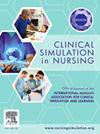The effect of scenario-based high reality simulation method on midwifery students' problem solving skills and anxiety levels: A randomized controlled trial
IF 3.4
3区 医学
Q1 NURSING
引用次数: 0
Abstract
Background
Simulation is an effective teaching method for improving patient care, especially in high-risk scenarios where urgent and rapid interventions are required. Research highlights the importance of using simulation from the student period to enhance midwives' skills in managing obstetric emergencies and improving their competencies.
Aim
The objective of this study was to ascertain the impact of a scenario-based high-reality simulation method on the problem-solving abilities and anxiety levels of undergraduate midwifery students. This research is necessary to fill the gap in the literature examining the effect of scenario-based high-fidelity simulation on the problem-solving skills and anxiety levels of midwifery students. The study aimed to both increase the quality of education and contribute to the national literature by emphasizing the importance of simulation methods in midwifery education.
Materials and methods
The research, planned in an experimental design with a pre-test and post-test control group, was conducted with students from the Midwifery department of a public university in Türkiye. The students were divided into two groups by the simple random sampling method: the intervention group (n = 39) and the control group (n = 39).
Results
While it was found that the state anxiety levels of the intervention group students decreased significantly after the simulation (p = .017), no significant difference was found between the control and intervention groups in terms of anxiety level (p = .461). Similarly, no significant difference was found between the students' satisfaction levels with the problem-solving inventory and training methods (p = .102).
Conclusion
The findings of this study indicate that a single simulation experience is not more effective than the traditional educational approach in reducing postapplication anxiety, enhancing training satisfaction, and developing problem-solving abilities.
求助全文
约1分钟内获得全文
求助全文
来源期刊

Clinical Simulation in Nursing
NURSING-
CiteScore
5.50
自引率
15.40%
发文量
107
期刊介绍:
Clinical Simulation in Nursing is an international, peer reviewed journal published online monthly. Clinical Simulation in Nursing is the official journal of the International Nursing Association for Clinical Simulation & Learning (INACSL) and reflects its mission to advance the science of healthcare simulation.
We will review and accept articles from other health provider disciplines, if they are determined to be of interest to our readership. The journal accepts manuscripts meeting one or more of the following criteria:
Research articles and literature reviews (e.g. systematic, scoping, umbrella, integrative, etc.) about simulation
Innovative teaching/learning strategies using simulation
Articles updating guidelines, regulations, and legislative policies that impact simulation
Leadership for simulation
Simulation operations
Clinical and academic uses of simulation.
 求助内容:
求助内容: 应助结果提醒方式:
应助结果提醒方式:


